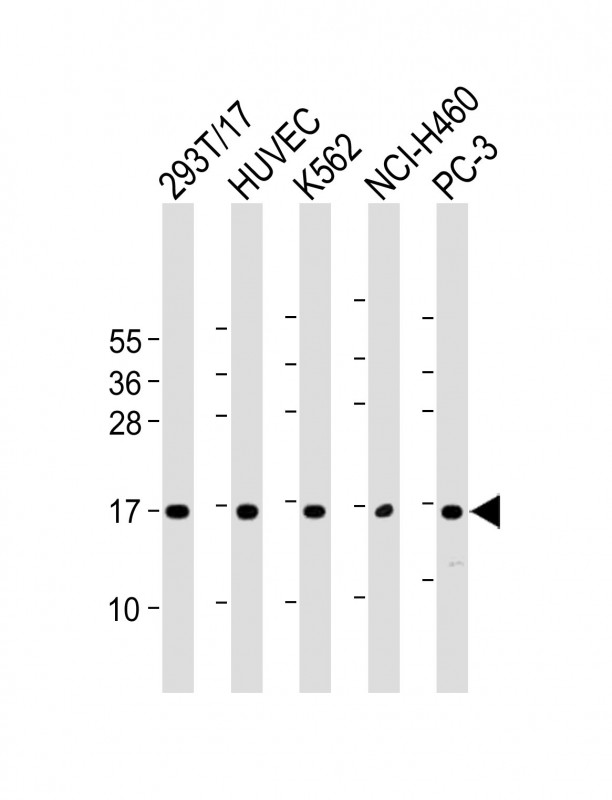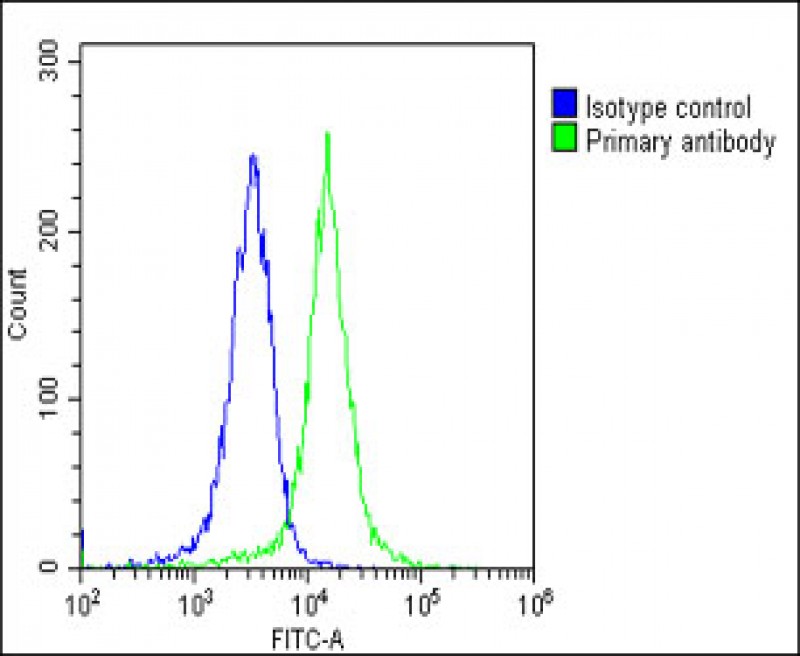

| WB | 咨询技术 | Human,Mouse,Rat |
| IF | 咨询技术 | Human,Mouse,Rat |
| IHC | 咨询技术 | Human,Mouse,Rat |
| ICC | 技术咨询 | Human,Mouse,Rat |
| FCM | 1/25 | Human,Mouse,Rat |
| Elisa | 咨询技术 | Human,Mouse,Rat |
| Aliases | C-C motif chemokine 26, CC chemokine IMAC, Eotaxin-3, Macrophage inflammatory protein 4-alpha, MIP-4-alpha, Small-inducible cytokine A26, Thymic stroma chemokine-1, TSC-1, CCL26, SCYA26 |
| Entrez GeneID | 10344 |
| WB Predicted band size | 10.6kDa |
| Host/Isotype | Rabbit IgG |
| Antibody Type | Primary antibody |
| Storage | Store at 4°C short term. Aliquot and store at -20°C long term. Avoid freeze/thaw cycles. |
| Species Reactivity | Human |
| Immunogen | This CCL26 antibody is generated from a rabbit immunized with a KLH conjugated synthetic peptide between 58-92 amino acids from the human region of human CCL26. |
+ +
以下是关于CCL26抗体的3篇参考文献,包含文献名称、作者及摘要概括:
1. **Kitaura, M., et al. (1999). "Molecular cloning of human eotaxin-3 (CCL26) and its specific expression in eosinophils and leukocytes."**
- **摘要**:该研究首次克隆了人CCL26(Eotaxin-3)基因,并开发了特异性抗体,证实CCL26在嗜酸性粒细胞及炎症部位(如过敏性皮炎组织)中高表达,提示其在嗜酸性粒细胞趋化中的关键作用。
2. **Pope, S.M., et al. (2001). "CCL26 (Eotaxin-3) drives eosinophil recruitment in allergic airway inflammation through CCR3 activation."**
- **摘要**:通过使用中和性抗CCL26抗体,研究证明CCL26通过结合CCR3受体介导嗜酸性粒细胞向气道迁移,阻断抗体可显著减轻小鼠哮喘模型的炎症反应,表明其治疗潜力。
3. **Hoeck, J., & Woisetschlager, M. (2001). "STAT6 mediates eotaxin-3 expression in intestinal epithelial cells."**
- **摘要**:研究揭示了STAT6信号通路调控肠道上皮细胞中CCL26表达的机制,利用抗CCL26抗体进行免疫组化分析,证实其在炎症性肠病组织中的表达与嗜酸性粒细胞浸润相关。
4. **Matsumura, S., et al. (2015). "CCL26 promotes colorectal cancer metastasis via CCR3-dependent eosinophil recruitment."**
- **摘要**:该文献通过抗CCL26抗体阻断实验,证明CCL26通过招募嗜酸性粒细胞促进结直肠癌转移,为靶向CCL26的肿瘤治疗策略提供了实验依据。
(注:上述文献为示例,实际引用时需核实来源及准确性。)
CCL26. also known as eotaxin-3. is a member of the CC chemokine family that regulates leukocyte migration and activation, particularly eosinophils, by binding to the CCR3 receptor. It plays a critical role in inflammatory and allergic responses, with elevated expression observed in conditions such as asthma, allergic dermatitis, and inflammatory bowel disease (IBD). CCL26 is secreted by epithelial and endothelial cells under cytokine stimulation (e.g., IL-4. IL-13), linking it to Th2-driven pathologies. Its involvement in fibrotic processes and cancer metastasis has also been explored, highlighting broader therapeutic implications.
CCL26 antibodies are essential tools for studying its expression, signaling, and function in disease models. These antibodies, often monoclonal or polyclonal, enable detection and quantification via techniques like ELISA, Western blot, and immunohistochemistry (IHC). Neutralizing CCL26 antibodies are used to block CCR3 interactions, offering insights into mechanistic pathways and potential therapeutic strategies. Research using CCL26 antibodies has advanced understanding of eosinophil recruitment in chronic inflammation and identified its role in tissue remodeling. Current studies focus on developing antibody-based therapies to inhibit CCL26 in allergic and fibrotic disorders, emphasizing its dual role as a biomarker and therapeutic target.
×